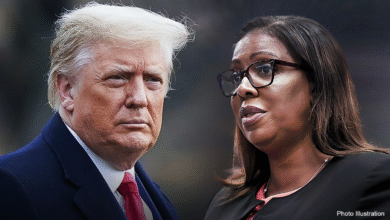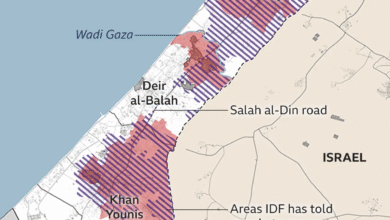US Iran Conflict: Trump Addresses Nation After Airstrikes

The US-Iran conflict has escalated dramatically in recent months, particularly following President Donald Trump’s address to the nation that detailed the United States’ recent military actions. On that fateful Saturday, the U.S. launched airstrikes on Iran, targeting three critical nuclear sites in Fordo, Natanz, and Esfahan, an action that has raised tensions in the Middle East. With U.S. Air Force B-2 bombers deployed, the stakes have never been higher, as these stealth aircraft delivered precision strikes aimed at crippling Iran’s nuclear capabilities. The utilization of advanced weaponry like the GBU-57 Massive Ordnance Penetrator has further intensified the focus on Tehran’s nuclear program. As the situation unfolds, the implications of this military engagement will have lasting effects on regional stability and international relations.
The tensions between the United States and Iran have reached a critical juncture, characterized by aggressive military maneuvers and geopolitical strife. This ongoing struggle involves complex dynamics, such as the defensive measures taken by Israel and the strategic goals of the Iranian government regarding its nuclear ambitions. Following a series of air raids, including targeted strikes on vital nuclear facilities, international observers are closely monitoring the developments that could reshape power relations in the region. As diplomatic conversations stall, the potential for further escalation looms, fueling concerns over the broader ramifications for global peace. Exploring these conflicts through various lenses sheds light on the multifaceted nature of US-Iran relations and the urgent need for resolution.
Overview of the US-Iran Conflict
The US-Iran conflict has a complex history, rooted in decades of political and military tensions. Recently, President Donald Trump addressed the nation, highlighting a new phase in this conflict following the recent US airstrikes on Iran. The targeted strikes aimed at critical Iranian nuclear sites in Fordo, Natanz, and Esfahan mark a significant escalation, as the US attempts to curb Tehran’s ambitions of developing nuclear weapons.
Military actions such as these underscore the increasing stakes in the ongoing feud between the two nations. The US’s direct involvement reflects its commitment to neutralizing potential threats posed by Iran’s nuclear program. With poised military forces, including Air Force B-2 bombers, the situation is fraught with uncertainties that could elevate regional tensions further.
Details of the Airstrike Operations
On the evening of the airstrikes, President Trump provided an update, detailing the strategic decision to deploy B-2 stealth bombers capable of delivering the GBU-57 Massive Ordnance Penetrator (MOP). This 30,000-pound bomb is effectively known as a ‘bunker buster,’ designed to penetrate deeply fortified structures, making it particularly suitable for targeting Iran’s nuclear facilities. The US Armed Forces aimed for precision to minimize collateral damage while sending a strong message against Iran’s nuclear ambitions.
These operations signify a pivotal shift in US military strategy in the region, drawing parallels to Israel’s longstanding efforts to undermine Iran’s nuclear capabilities. The successful execution of these airstrikes reflects the United States’ commitment to building international coalitions aimed at a significant long-term reduction of Tehran’s nuclear proliferation.
Implications of the US’s Military Action
The latest military intervention has profound implications for both the US and Iran. With the ongoing airstrikes, the US aims not only to dismantle Iranian nuclear infrastructures but also to deter the Iranian regime from future aggressive behavior in the region. President Trump’s address emphasized these objectives, clearly marking a shift away from diplomacy towards a more action-oriented approach.
Moreover, the repercussions extend beyond immediate military outcomes. This conflict potentially influences global oil markets, escalates regional instability, and could provoke retaliation from Iran or its allied groups. The broader implications suggest that the US-Iran conflict will remain a focal point of international attention as both nations navigate this turbulent chapter.
Strategic Importance of Iran’s Nuclear Facilities
Iran’s nuclear sites, particularly Fordo, Natanz, and Esfahan, are critical to its ambitions of becoming a nuclear power. These facilities represent the foundation of Tehran’s nuclear program, which has long been a point of contention for the US and its allies. The recent airstrikes reflect a strategic decision by the US to preemptively undermine these capabilities before they can threaten regional security or lead to nuclear proliferation.
In targeting these strategic locations, the US seeks not only to cripple Iran’s current program but to send a clear message to any opposing state actors. The strikes aim to showcase the US’s readiness to utilize its military might against nations that pursue aggressive nuclear policies, thus establishing a precedent for future engagement in the region.
Analysis of the Trump Administration’s Strategy
The Trump administration’s approach has revolutionized how the US engages with adversarial nations like Iran. The decision to launch airstrikes following a national address reveals a tactical mindset aimed at swiftly responding to perceived threats. This proactive strategy diverges from previous administrations that might have favored diplomacy or negotiation, indicating a new era of direct military confrontation on the global stage.
By leveraging advanced military technology, including B-2 bombers, the US aims to instill a sense of deterrence. The messaging around these operations emphasizes a robust commitment to American interests abroad, signaling that the US is willing to use force to protect its strategic objectives.
The Role of International Relations in the Conflict
The US-Iran conflict cannot be viewed in isolation; it plays out against a backdrop of international relations involving various global players. Allies such as Israel have historically supported aggressive actions against Iranian nuclear aspirations, aligning more closely with the US strategy as seen in these recent attacks. The coalition dynamics underscore the precarious balance of power in the Middle East, where the US, Israel, and other nations share common interests in undermining Iranian influence.
Conversely, the conflict has prompted Iran to strengthen its relationships with other nations, potentially leading to a geopolitical realignment. Diplomatic relationships may shift, and responses from allies of Iran could complicate the US’s strategy further, indicating that the future of international relations surrounding this conflict will be pivotal in shaping its outcome.
Potential for Escalation in Military Engagement
Each airstrike not only marks a significant military action but also opens the door to potential escalation. The US’s direct attack on Iranian nuclear sites is likely to provoke a robust response from Tehran, either through direct military retaliation or asymmetric warfare tactics supported by proxy groups throughout the region. This possibility of retaliation signifies that the balance of conflict may tip into a broader military engagement.
Consequently, military strategists and analysts are closely monitoring the developments following these actions. The prospect of escalated conflict raises questions about the efficacy of military solutions in addressing long-standing geopolitical issues. A broader confrontation could dramatically reshape Middle Eastern politics and global peace dynamics.
Public Perception and Domestic Impact
The airstrikes on Iran and President Trump’s national address have significant implications for public perception in the United States. Military actions often evoke polarized responses among the American populace, with some supporting a rigorous approach to national security while others advocate for a diplomatic resolution to conflicts. Public reaction can influence domestic policies and the political landscape, affecting future elections and administration strategies.
Moreover, Trump’s approach towards Iran may have lasting effects on public views regarding military interventions. High-profile military actions often garner attention, shaping narratives around national security and foreign policymaking in the US. The ramifications of these strikes will undoubtedly fuel debate among lawmakers and constituents about the appropriate use of military force abroad.
Future Directions in US Foreign Policy
As the US embarks on a new trajectory in its foreign policy following the strikes on Iranian nuclear sites, the long-term effects remain uncertain. Revisiting approaches to countering Iran’s nuclear ambitions will be critical, as military action alone may not result in lasting peace or stability. Strategic diplomatic engagement with allies and adversaries alike could provide alternative pathways toward achieving US objectives.
In light of these developments, future US administrations will need to reassess their strategies toward both conflict resolution and the management of nuclear threats. Balancing military readiness with diplomatic initiatives may offer a comprehensive approach to handling the complexities of the US-Iran conflict and broader regional stability.
Frequently Asked Questions
What led to the recent US airstrikes on Iran’s nuclear sites?
The recent US airstrikes on Iran’s nuclear sites were a response from President Donald Trump following escalating tensions, particularly regarding Iran’s nuclear program. The U.S. targeted locations in Fordo, Natanz, and Esfahan to disrupt Tehran’s nuclear capabilities and prevent further advancements in their weapons development.
How do B-2 bombers relate to the US Iran conflict?
B-2 bombers are significant in the US Iran conflict as they were deployed for airstrikes on Iran’s nuclear sites. These stealth bombers, capable of carrying massive ordnance like the GBU-57 Massive Ordnance Penetrator, were utilized to effectively target fortified nuclear facilities in Iran, highlighting the seriousness of U.S. military efforts in this conflict.
What did Trump address in relation to the US Iran conflict?
In his address to the nation, President Trump outlined the rationale behind the US airstrikes on Iran, framing them as a necessary measure to counteract Iran’s aggressive advancements in their nuclear program. He emphasized the commitment to preventing Iran from becoming a nuclear threat.
What are the implications of US airstrikes on Iran’s nuclear sites for the Tehran nuclear program?
The US airstrikes aimed at Iran’s nuclear sites are intended to significantly hinder the Tehran nuclear program by destroying critical infrastructure. This action is part of a broader strategy to weaken Iran’s regime and stop them from pursuing nuclear weapons.
How does Israel’s involvement impact the US Iran conflict?
Israel’s involvement in the US Iran conflict complicates diplomatic relations, as both nations coordinate efforts to undermine Iran’s nuclear program. The shared goal of crippling Tehran’s nuclear capabilities has led to military collaboration and heightened tensions across the region.
| Event | Details |
|---|---|
| U.S. Attack on Iran | The United States attacked three nuclear sites in Iran: Fordo, Natanz, and Esfahan. |
| Military Action | U.S. Air Force B-2 stealth bombers were deployed to carry out the attacks. |
| Bomb Used | The GBU-57 Massive Ordnance Penetrator (MOP), a 30,000-pound bunker buster, was used. |
| Objective | The attack aims to cripple Iran’s nuclear program and support efforts to overthrow its regime. |
Summary
The recent U.S. Iran conflict escalated dramatically when the United States launched targeted strikes on key Iranian nuclear facilities. This military intervention underscores the ongoing tensions between the U.S. and Iran, as the U.S. seeks to prevent the advancement of nuclear capabilities within Iran and supports regime change efforts. The involvement of advanced military assets such as the B-2 bombers signifies a commitment to an aggressive strategy in the region, raising concerns over future escalations.




